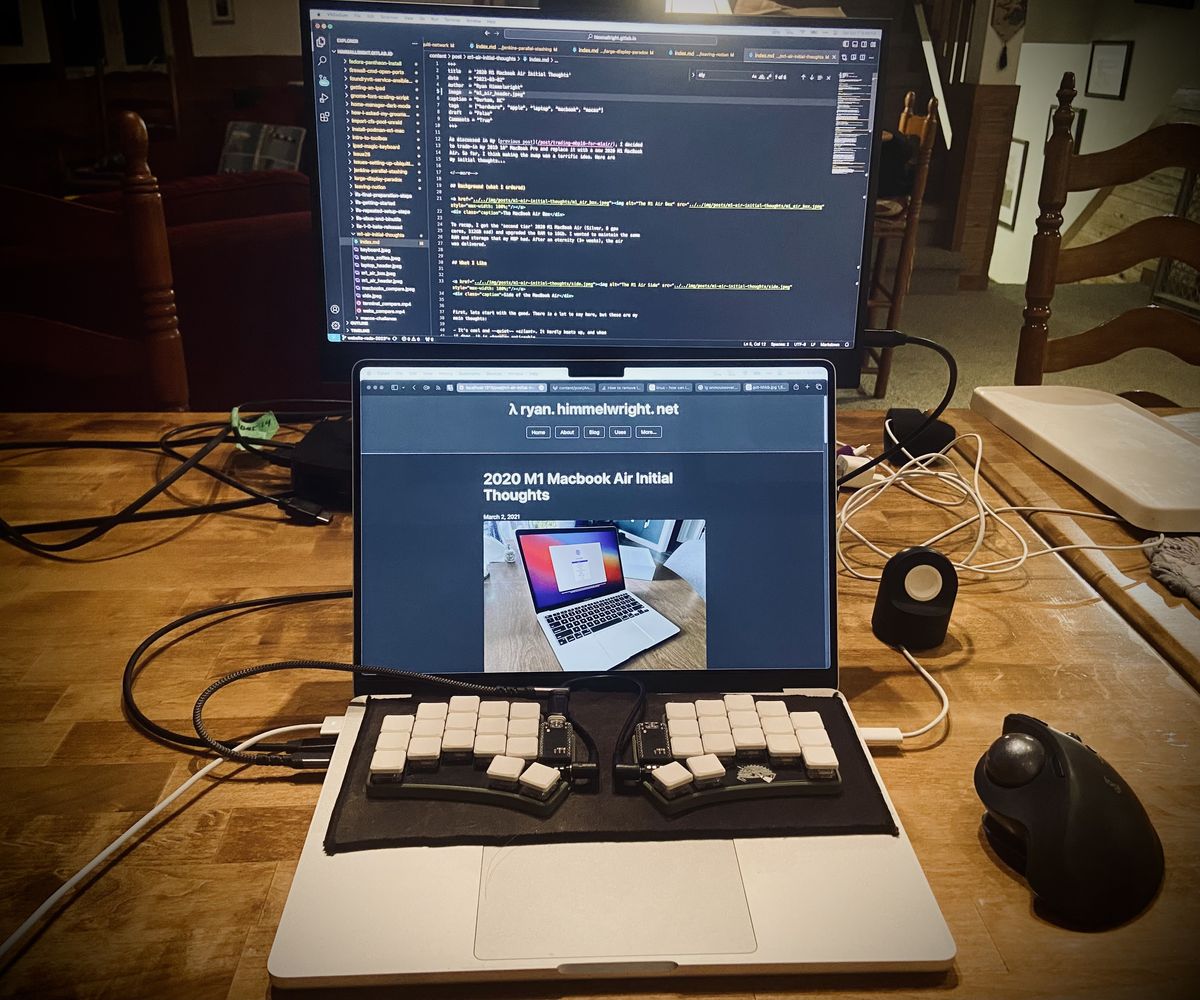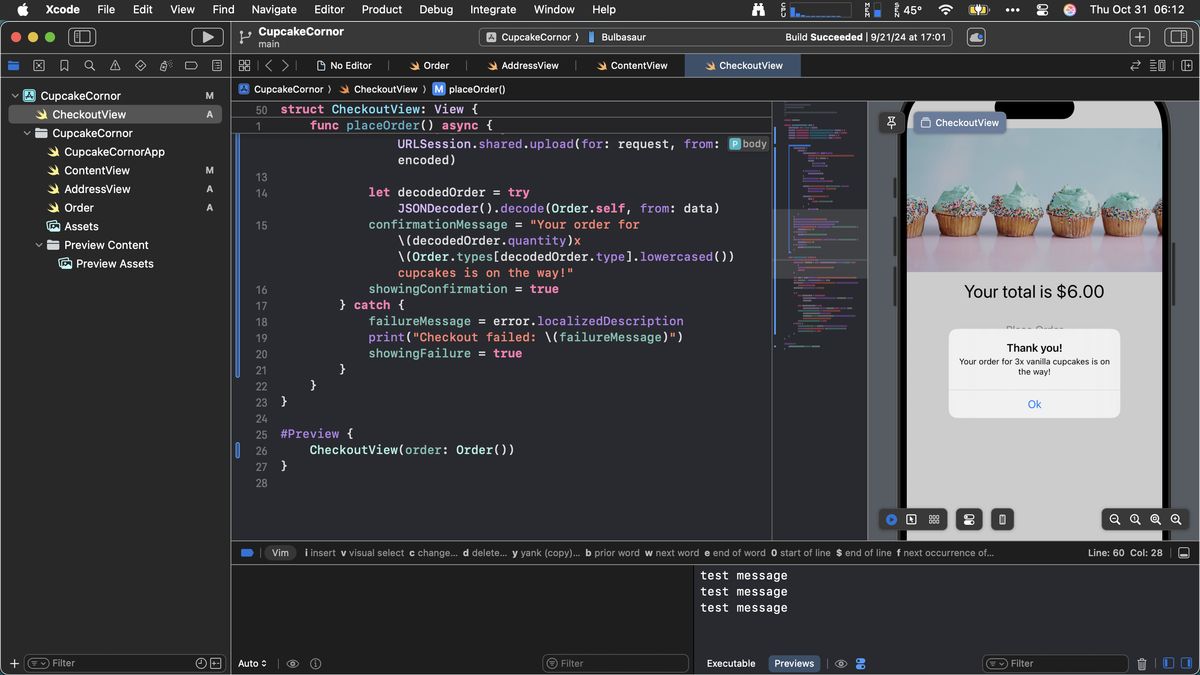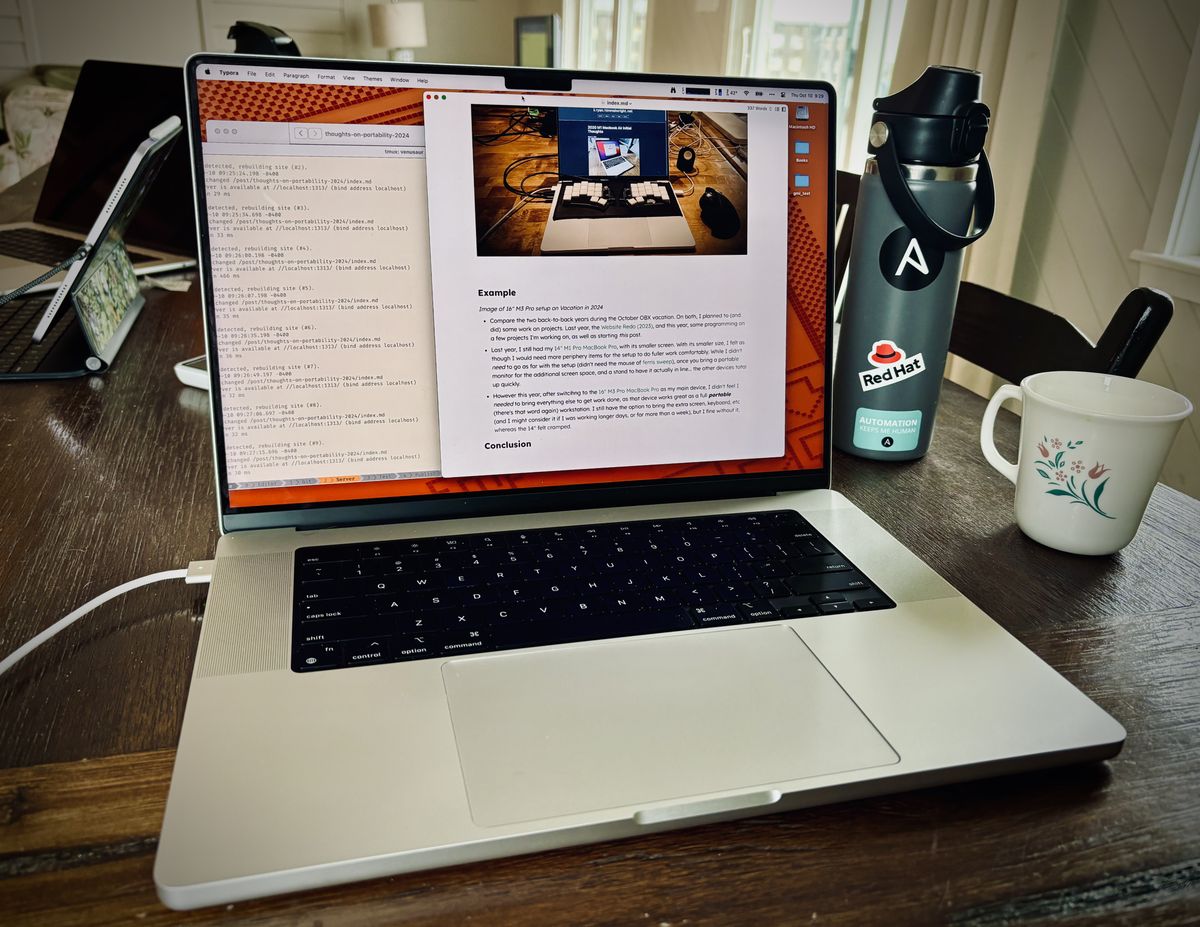Thoughts on 'Portability'

I find it interesting that reviews for tech products with two size options (ex: 14" vs 16" MacBook Pros), will often take a somewhat lazy approach when comparing the two variants. Usually, the argument is boiled down to “the smaller device is ‘more portable’ but the bigger one, ‘has a larger screen, which is great for multi-tasking’. I guess both statements are technically true, but they assume “portability” and "multi-tasking” are universal, constant, traits that match every person and use case. Worse, I think this quick passing remark prevents consumers from digging a little deeper into how they will actually use a device once they obtain it.
Thoughts

After several years using a mix of 14" and 16" MacBooks Pros, two 13" MacBook Airs, sampling my wife’s 15" MacBook Air, and a smattering of all sizes of laptops and tablets before that, I’ve developed a couple of opinions about device sizes, that might seem counter-intuitive.
‘Multi Tasking’ and Screen Size

The first lesson, is that the screen size requirement for “multi tasking” is heavily dependent on the workflow and tooling of a given task. Specifically, screen size only really matters when considering what needs to be displayed on the screen concurrently This may be all the panels and menus of a complex application UI, or the simultaneous use of many simple ones.
For instance, I prefer a smaller screen when I am writing a post, as it helps keep my focus on the task at hand. However, I wouldn’t consider that process ‘mono-tasking’. I’m often flipping between windows writing the draft, editing photos, grabbing source links, checking words in the dictionary, etc. However, none of those tasks require an application with an extensive UI, and I don’t need to see them all at the same time.
By contrast, when I’m coding using a heavier IDE like Xcode, the UI of that single application contains many sections I like to have open (the code editor, simulator preview pane, debugger pane, file tree, etc). This makes my 16" MacBook Pro much more suited for the job. It should be noted that I didn’t simply state ‘the 16" is better at coding’'. If I’m coding some Clojure in Neovim, there’s not much of a difference between sizes.
‘Portability’ Preferences
Portability can refer to a lot of things. Does it imply the ability to pull a device out of a bag with one hand to check a few emails at the airport or a coffee shop? Or does it represent a computer that travels in a suitcase, and is then setup on a desk to complete a week’s worth of full days while working from a remote office on a business trip? Both cases require a “portable” machine, but my recommendations would differ greatly for each of these roles.
The best example I’ve heard discussing this difference is from Marco Arment on the ATP podcast, when he describes living both the “laptop-laptop” and “desktop-laptop” lifestyle (a setup I also have…).
The “laptop-laptop” is a small computer to be used as a typical laptop, for “laptop-things”. This can be around the house for small tasks, when frequently moving from meeting room to meeting room at the office, or thrown in a bag for quick trips. It’s the grab and go computer.
The “desktop-laptop” by contrast, lives most of its life indistinguishable from a desktop computer. It remains at a desk, often tethered to an external monitor, mouse (trackball), keyboard, audio equipment, external hard drives, and other peripheral devices. However, it also functions as an all-in-one portable workstation, containing everything required (or close enough) to work when relocated away from that desk.
Example

For example, let’s compare my computer setup during two back-to-back years of my family October vacation. On both, I planned to (and did) work on some projects. Last year, I worked on the massive Website Redo (2023), and this year, a few programming projects, as well as starting this post.
Last year, I still had my 14" M1 Pro MacBook Pro. However, given its smaller size, I felt I would need more periphery items for the setup to work comfortably. While I didn’t need to go as far as bringing the mouse and ferris sweep, once you pack a portable monitor and stand for the additional screen space, the other devices snowball quickly.
By comparison, after switching to the 16" M3 Pro MacBook Pro as my main device this year, I didn’t feel I needed to bring everything else to get work done. The 16" MacBook Pro works great as a full portable (there’s that word again) workstation. I still have the option to bring the extra screen, keyboard, etc (and I might have considered it if I was working full days, or for more than a week), but I was fine without it, whereas the 14" felt cramped. Despite being the larger laptop, in the end the 16" setup took up much less volume in my bag.
Conclusion
Hopefully, this didn’t sound too much like a rant. With endless advice following the “portable vs good for multi-tasking” template, I wanted to put something out there to counter it. I’ve formed these thoughts through much trial and error, and they still continue to evolve over time.